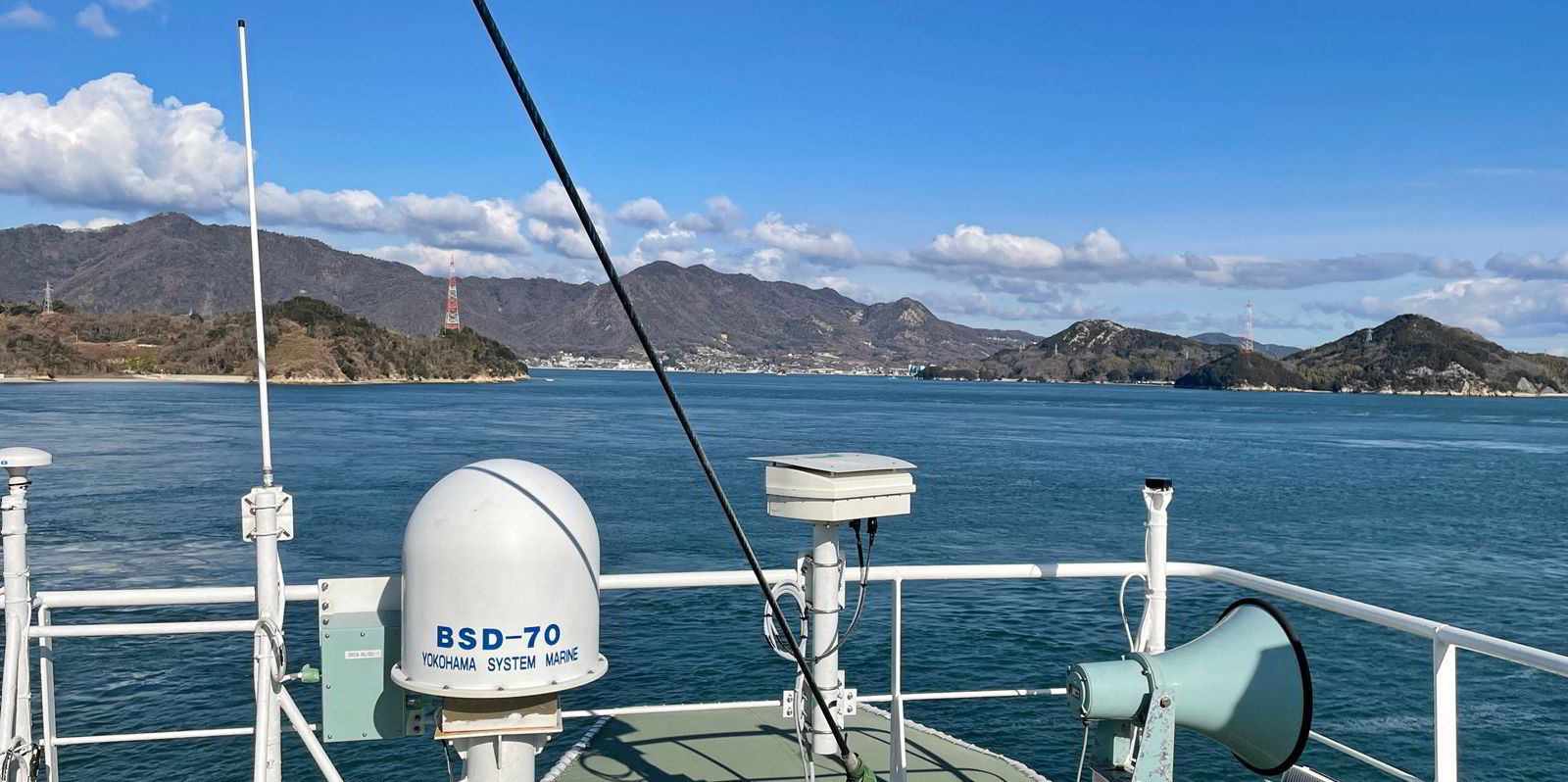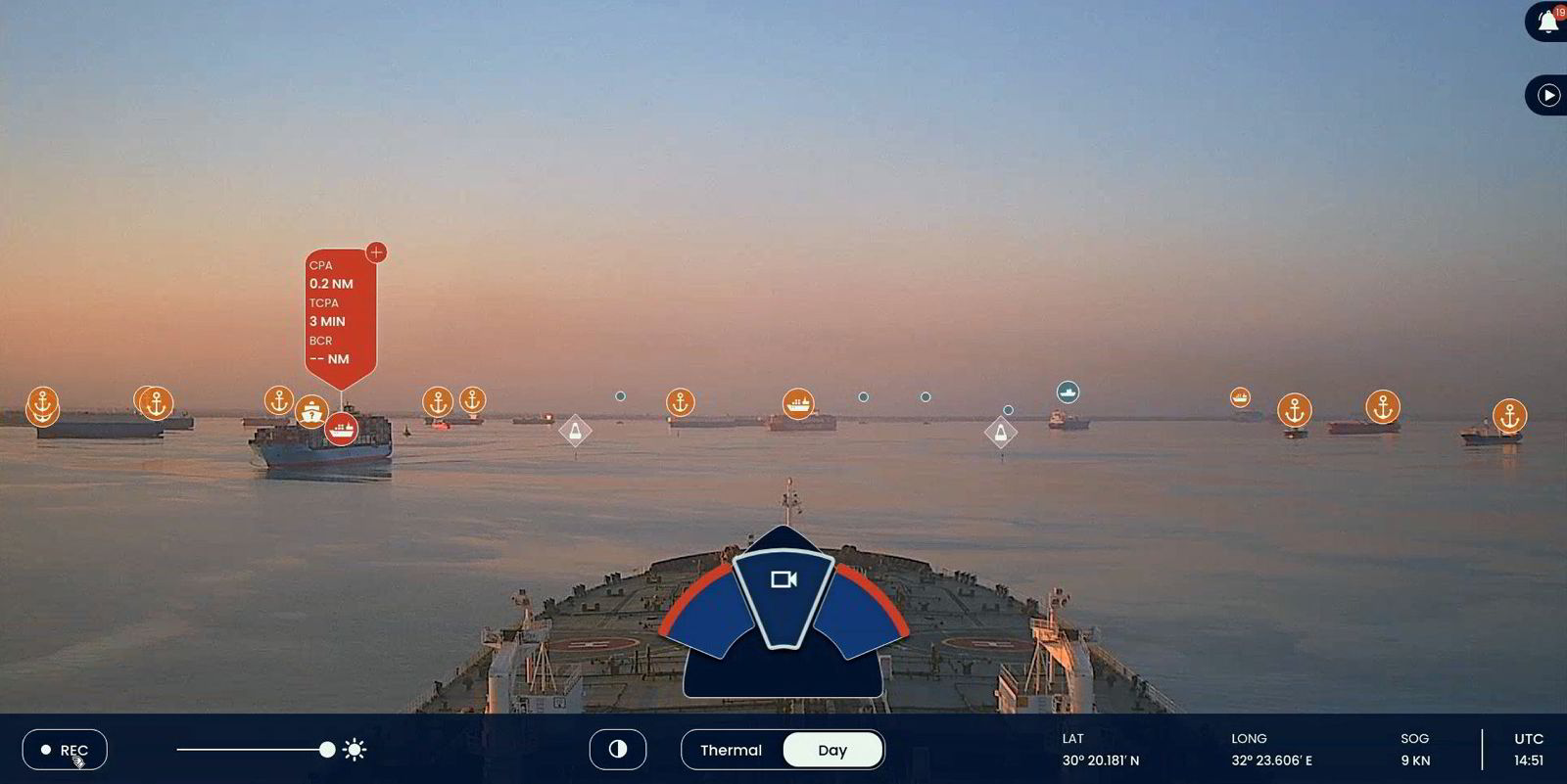A year after demonstrating a 790 km (480 miles) autonomous cargo ship journey through Tokyo Bay, Israeli digital developer Orca AI is not looking to create unmanned ships but to improve its collision avoidance system that helps crews better navigate difficult circumstances.
Since its commercial launch in 2021, Orca’s artificial intelligence (AI)-based watch-keeping enhancement systems have been fitted to 150 vessels across all sectors, and CEO Yarden Gross told TradeWinds its orderbook for 2023 is set to triple that number.
The Tokyo Bay project performed by the 1,800-dwt Suzaku (built 2019) demonstrated how the general cargo and container ship was able to sail through the waterway, which is used by up to 500 other vessels making 107 collision avoidance manoeuvres without any crew on board.
The 40-hour-long journey in February 2022 was overseen from a control centre in Tokyo, with minimal human intervention to steer the ship through the congested waters using 18 cameras to provide an all-around view for detecting, tracking and classifying other vessels.
Gross said autonomous operations of oceangoing vessels “is still over the horizon” but Orca is making steps forward in automating navigation systems for deepsea ships, including tankers, LNG and bulk carriers plus big container ships.
Orca’s system automates watch keeping to improve on what humans can see and respond to, particularly at night or in bad conditions where thermal imaging cameras can pick up distant targets and AI can identify what they are, their range and closest point of approach to prioritise avoidance manoeuvres if needed.
It can even identify and avoid marine animals.

An upgraded camera will be available in the next quarter this year with advanced software based on having built “the biggest marine visual dataset in the world” used to train models, Gross said.
He likens Orca’s approach to Tesla’s business model: where the camera hardware is an infrastructure on which software can be constantly upgraded.
“The cameras are the eyes, and the algorithms are the brain,” he said.
“Looking down the road, we want to automate making decisions on navigation. Sailing from Europe to the US, you can imagine leaving port on manual operation but, once into the open ocean, go to an autonomous mode.”
Autonomous operation in the open sea can not only reduce workload for the crew, but the system will be able to find the best routes and calculate voyage and fuel use, which will also help with Carbon Intensity Indicator (CII) calculations.
“A big part of vessels polluting a lot and not being rated good for CII is not down to the vessels themselves but human behaviour, and this is something you can optimise in the open ocean.” Data is uploaded to provide visibility on operations to fleet managers.
Orca is working on approval from a classification society for autonomous capabilities this year to test the technology in 2024 and put it on the market in the next two or three years, Gross said.
The two-year-long Tokyo Bay project involved working with 30 Japanese companies led by NYK group subsidiaries within the Designing the Future of Full Autonomous Ships consortium, which involves The Nippon Foundation.





